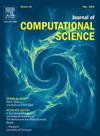Forward and turning flight simulation of flying cars and comparative evaluation of flight dynamics models considering wind disturbances
IF 3.7
3区 计算机科学
Q2 COMPUTER SCIENCE, INTERDISCIPLINARY APPLICATIONS
引用次数: 0
Abstract
The implementation of flying cars as Urban Air Mobility (UAM) requires ensuring safety, and high-precision simulation technology is essential as an efficient development method. As most flying cars in the development stage are small, multi-rotor types that derive thrust from multiple propellers, the effect of wind is considered to be significant during actual flight. In previous studies, attempts were made to elucidate the effects of wind on small Urban Air Mobility (UAM) vehicles in the development stage by introducing wind disturbances, with headwinds during forward flight and crosswinds during turning flight [1]. In this study, four additional high-speed disturbance patterns were added and a total of 22 patterns of acceleration and constant speed turning flight were numerically simulated to elucidate the dynamic effects of wind disturbance on the aircraft in the high-speed range. In addition, as there is a trade-off between calculation time and calculation accuracy in CFD, more accurate and efficient control design can be carried out before fluid analysis to speed up the development of flying cars. Therefore, a flight dynamics model was designed that incorporates the three-dimensional Newton-Euler equation and PID control, taking into account drag forces and the torque exerted by the drag forces. This study aims to elucidate the aerodynamic interference effects on the aircraft caused by high-speed disturbances, which have not been thoroughly investigated in previous research. Additionally, it evaluates the validity of two flight dynamics models and highlights the importance of considering fluid dynamics.
飞行汽车前转飞行仿真及考虑风扰动的飞行动力学模型比较评价
飞行汽车作为城市空中交通工具(Urban Air Mobility, UAM)的实现需要保证安全性,而高精度仿真技术作为一种高效的开发手段必不可少。由于发展阶段的飞行汽车大多是小型多旋翼型,由多个螺旋桨产生推力,因此在实际飞行中,风的影响被认为是重要的。在以前的研究中,试图通过引入风干扰来阐明风对小型城市空中交通工具(UAM)在发展阶段的影响,在前进飞行时引入逆风,在转弯飞行时引入侧风[1]。本文通过增加4种高速扰动模式,对22种加速和匀速转弯飞行模式进行了数值模拟,以阐明风扰动对飞机高速范围内的动力学影响。此外,由于CFD在计算时间和计算精度之间存在权衡,因此可以在流体分析之前进行更精确、高效的控制设计,从而加快飞行汽车的发展。因此,考虑飞行器的阻力和阻力所产生的力矩,设计了结合三维牛顿-欧拉方程和PID控制的飞行动力学模型。本研究旨在阐明高速扰动对飞机气动干扰的影响,这是以往研究中尚未深入研究的问题。此外,它评估了两种飞行动力学模型的有效性,并强调了考虑流体动力学的重要性。
本文章由计算机程序翻译,如有差异,请以英文原文为准。
求助全文
约1分钟内获得全文
求助全文
来源期刊

Journal of Computational Science
COMPUTER SCIENCE, INTERDISCIPLINARY APPLICATIONS-COMPUTER SCIENCE, THEORY & METHODS
CiteScore
5.50
自引率
3.00%
发文量
227
审稿时长
41 days
期刊介绍:
Computational Science is a rapidly growing multi- and interdisciplinary field that uses advanced computing and data analysis to understand and solve complex problems. It has reached a level of predictive capability that now firmly complements the traditional pillars of experimentation and theory.
The recent advances in experimental techniques such as detectors, on-line sensor networks and high-resolution imaging techniques, have opened up new windows into physical and biological processes at many levels of detail. The resulting data explosion allows for detailed data driven modeling and simulation.
This new discipline in science combines computational thinking, modern computational methods, devices and collateral technologies to address problems far beyond the scope of traditional numerical methods.
Computational science typically unifies three distinct elements:
• Modeling, Algorithms and Simulations (e.g. numerical and non-numerical, discrete and continuous);
• Software developed to solve science (e.g., biological, physical, and social), engineering, medicine, and humanities problems;
• Computer and information science that develops and optimizes the advanced system hardware, software, networking, and data management components (e.g. problem solving environments).
 求助内容:
求助内容: 应助结果提醒方式:
应助结果提醒方式:


